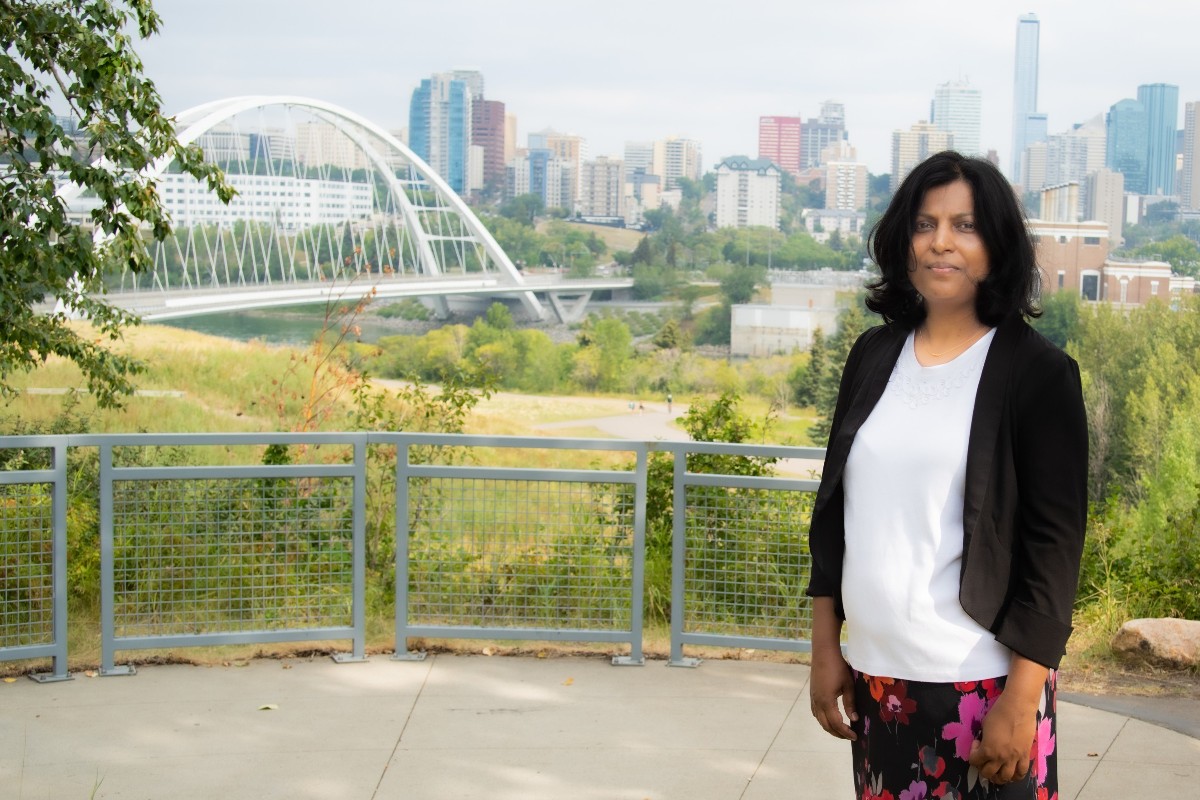Cities feel the heat
Bev Betkowski - 16 December 2022

Post-doctoral researcher Nilusha Welegedara found that Edmonton has “urban heat islands” with significantly higher temperatures than surrounding rural areas in both summer and winter. (Photo: Matt Photo Videography)
Nilusha Welegedara and Sandeep Agrawal in the Department of Earth and Atmospheric Sciences identified pockets of extreme heat known as “urban heat islands” in Edmonton. The pair found these pockets had higher temperatures than surrounding rural areas in summer and winter. Surface temperatures in the city have increased as much as 12 C compared with nearby rural areas over the last 20 years, says Welegedara, a post-doctoral researcher.
“[Heat islands] exacerbate the impact of heat waves, going beyond the comfort zone of humans,” she says. Higher urban temperatures can lead to heat stroke or exhaustion and increase health risks for vulnerable people. The environment also takes a hit from hot temperatures as people run air conditioners.
The findings show cities need to pay attention to the rise in urban heat islands and take steps to mitigate them, says Agrawal, director of the
U of A’s School of Urban and Regional Planning. Planners can ease hot spots by planting urban forests, retaining mature trees and increasing vegetation cover, he adds. “We want to reduce potential severe consequences on Edmontonians’ health and well-being.”
The research was funded through Future Energy Systems, a cross-disciplinary research and teaching network at the U of A working to develop innovations for energy transition. The work was also supported by the Alberta Ecotrust Foundation under the CitiesIPCC Legacy Research Grant Program and the City of Edmonton, with air quality data obtained from PurpleAir Inc.